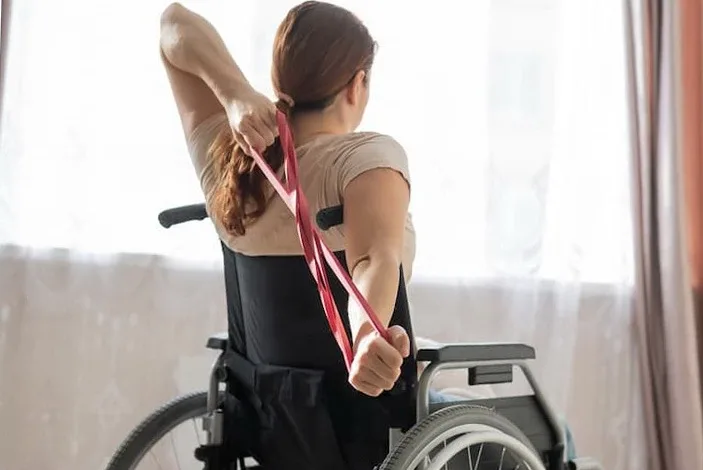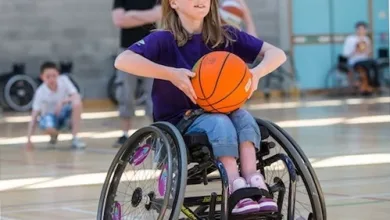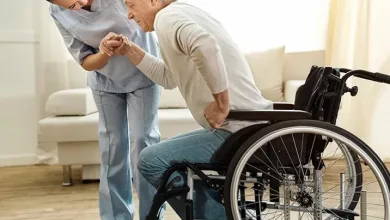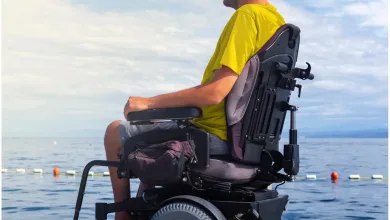Top 7 Prevent Pressure Sores Exercises (Wheelchair Users)

Table of Contents
Top 7 Prevent Pressure Sores Exercises (Wheelchair Users)
Taking Charge of Your Health: Why Pressure Relief Matters
Imagine you’re zooming around in your wheelchair, feeling free and independent. But then, discomfort sets in. You might be experiencing pressure sores, also called pressure injuries. These can be painful and even lead to serious health problems.
For wheelchair users, spending long periods sitting down puts extra pressure on specific areas of the body, like your buttocks, thighs, and tailbone. This constant pressure can damage the skin and underlying tissues, leading to pressure sores.
The good news is you can take charge of your health and prevent pressure sores from developing. Here’s where pressure relief exercises come in!
How Wheelchair Exercises Help with Pressure Relief
Wheelchair exercises are a fantastic way to keep your blood circulating and prevent pressure from building up in any one spot. By moving your body regularly, you can:
- Improve circulation: Exercise helps your heart pump fresh blood and oxygen to your skin and tissues, keeping them healthy and less susceptible to damage.
- Reduce pressure build-up: Moving around takes the pressure off your skin and allows it to breathe.
- Maintain muscle strength: Regular exercise keeps your muscles strong, which helps you maintain good posture and prevent skin breakdown.
Top 7 Wheelchair Exercises for Pressure Relief (Easy & Effective!)
Now, let’s dive into the fun part: exercises! Here are our top 7 picks that are easy to do anywhere, even if you have limited mobility:
1. Wheelchair Push-ups:
This exercise strengthens your arms and shoulders while relieving pressure on your backside. Here’s how:
- Prep: Park your wheelchair in a safe, open space. Lock the wheels and loosen any straps that might restrict your movement.
- Action: Place your hands shoulder-width apart on a sturdy surface, like a desk or countertop. Push yourself up and away from the wheelchair, straightening your arms as much as possible. Hold for a few seconds, then slowly lower yourself back down.
- Modification: If pushing up completely is difficult, use the wheels of your wheelchair for some support.
- Pro Tip: Aim for three sets of 10 repetitions throughout the day.
2. Weight Shifts (Leans):
These simple movements help redistribute pressure and improve circulation in your buttocks and thighs. There are three variations you can try:
- Side-to-side Leans: Sit tall in your wheelchair and slowly lean your upper body to one side as far as comfortably possible. Hold for a few seconds, then lean to the other side. Repeat ten times on each side.
- Forward Lean with Chest on Knees: Scoot forward in your chair and gently hug your knees to your chest. Hold for a few seconds, then return to the starting position. Repeat ten times.
- Forward Lean on Table/Desk: Pull up to a table or desk and lean forward, resting your forearms on the surface. This helps take pressure off your tailbone. Hold for 30 seconds to 1 minute.
3. Seated Leg Extensions:
Keeping your legs strong and healthy is important for everyone, and wheelchair users are no exception! This exercise called seated leg raises, helps target your quad muscles (the ones in the front of your thighs). Here’s how to do it:
- Sit up tall in your wheelchair with your feet flat on the floor.
- Slowly lift one leg out in front of you, keeping your heel flat on the ground (think of kicking the air!).
- Hold your leg straight for a few seconds, feeling the stretch in your thigh.
- Gently lower your leg back down to the starting position.
- Repeat ten times with each leg.
Bonus Tip: Try a modified version if lifting your leg straight out in front is too difficult. Raise your leg a few inches off the ground and hold for a few seconds before lowering it back down. This will still help to stretch and strengthen your quads.
4. Ankle Pumps:
Ankle pumps are a fantastic way to keep the blood flowing in your feet and ankles, especially if you experience swelling. They’re a simple exercise you can do almost anywhere, even while sitting in your wheelchair!
Here’s how to get your toes tapping:
- Sit comfortably in your wheelchair.
- Imagine you’re pointing your toes down at the floor like a ballerina. Hold for a second.
- Now, flex your foot upwards, bringing your toes towards you like you’re grabbing something with your foot. Hold for another second.
- That’s one pump! Repeat this movement quickly 10-15 times.
Tip: Think of it like pressing the gas and brake pedals in a car with your feet! You can make it a game by doing the pumps as fast as possible.
5. Seated Shoulder Rolls:
Shoulder rolls help improve your range of motion and prevent tightness in your shoulders. Here’s how:
This exercise helps loosen up your shoulders and improve your range of motion. It’s a great way to prevent tightness and discomfort, especially if you spend much time sitting in your wheelchair.
Here’s how to do it:
- Sit up straight in your wheelchair with your arms relaxed at your sides.
- Begin by slowly rolling your shoulders forward in a circular motion. Imagine you’re drawing small circles with your shoulder blades on your back.
- Make ten small circles forward, reverse directions and make ten small circles backwards.
- Focus on making smooth, controlled movements and avoid any jerking motions.
Tip: You can also add a little variety by rolling your shoulders in larger circles or by holding each position (forward or backwards) for a few seconds before switching directions.
6. Seated Bicep Curls:
Have you ever wanted to show off some impressive arm muscles? Well, even while seated in your wheelchair, you can build some serious strength with seated bicep curls! This exercise targets your biceps, those muscles on the front of your upper arms that help you bend your elbows and lift things.
Here’s how to become a bicep-building champion:
- Sit up tall in your wheelchair with your arms relaxed at your sides.
- Use light weights to make this exercise more challenging (think soup cans or water bottles). If you don’t have weights, no worries, you can still get a good workout without them!
- Hold your weights (or pretend you’re holding weights) with your palms facing up.
- Now comes the fun part! Bend your elbows, bringing your forearms up towards your shoulders. Imagine you’re flexing your muscles to show off how strong you are!
- Hold for a few seconds, feeling the squeeze in your biceps.
- Slowly lower your arms back down to the starting position.
- Repeat this move ten times with each arm.
Bonus Tip: Want to make it a little harder? Try doing bicep curls with both arms at the same time!
7. Isometric Exercises:
Isometric exercises might sound fancy, but they’re actually a secret weapon for wheelchair users looking to build strength without a lot of movement. These exercises involve tensing your muscles without actually moving your joints. It’s like giving your muscles a mini-workout from the inside out!
Here’s the cool part: isometric exercises are perfect for people with limited mobility because they’re safe and easy to do anywhere, even while seated in your wheelchair. Here are two examples you can try:
The Mighty Glute Squeeze: Imagine you’re trying to hold onto a slippery seat cushion! Squeeze your buttocks muscles together as tightly as you can. Hold for a count of 5, then relax. Repeat this ten times.
Belly Button Pull-In: Think about sucking your belly button in towards your spine, like you’re trying to make your tummy disappear (it won’t actually disappear, but that’s okay!). Hold for a count of 5, then relax. Repeat this ten times.
Bonus Tip: Isometric exercises might seem easy, but take them seriously! You’ll definitely feel the burn after a few repetitions.
Remember:
- Listen to your body and take breaks when needed. Don’t push yourself to pain.
- Consult with a physical or occupational therapist to create a personalized exercise program for you.
- Make these exercises a part of your daily routine! Aim for at least 30 minutes of moderate-intensity exercise most days of the week.
Beyond Exercises: Other Tips for Preventing Pressure Sores
While wheelchair exercises are a powerful tool, there are other things you can do to prevent pressure sores:
- Perform regular skin checks: Look for any signs of redness, irritation, or breakdown on your skin. Early detection is key!
- Maintain a healthy weight: Excess weight puts extra pressure on your skin.
- Eat a healthy diet: A balanced diet with plenty of fruits, vegetables, and whole grains helps keep your skin healthy.
- Drink plenty of fluids: Staying hydrated helps your skin stay plump and resilient.
- Use a pressure-relieving cushion: A specially designed cushion can help distribute pressure more evenly while you’re sitting.
- Practice good positioning: Make sure you’re sitting up straight and have a good posture in your wheelchair.
- Shift your weight frequently: Don’t stay in one position for too long. Try to shift your weight every 15-30 minutes.
FAQs: Frequently Asked Questions about Pressure Relief Exercises for Wheelchair Users
Q: How often should I do these exercises?
A: Aim for at least three sets of 10 repetitions for each exercise, 2-3 times a day. However, it’s always best to consult with a healthcare professional for a personalized recommendation.
Q: What if I have limited mobility and can’t do some of these exercises?
A: There are still modifications you can try! Talk to a physical or occupational therapist about exercises that are safe and effective for you.
Q: Are there any risks associated with these exercises?
A: While generally safe, it’s important to listen to your body. Stop any exercise that causes pain and consult with a healthcare professional if you have any concerns.
Q: Can these exercises help me improve my overall fitness?
A: Absolutely! Regular exercise is beneficial for everyone, including wheelchair users. These exercises can help improve your strength, flexibility, and cardiovascular health.
Take Charge of Your Wellbeing with Pressure Relief Exercises
By incorporating pressure relief exercises into your daily routine, you can significantly reduce your risk of developing pressure sores. Remember, you are in control of your health! With a little effort and consistency, you can stay active, prevent pressure sores, and live a full and independent life.
What questions do you have about pressure relief exercises or preventing pressure sores? Leave a comment below, and we’ll do our best to answer them!



